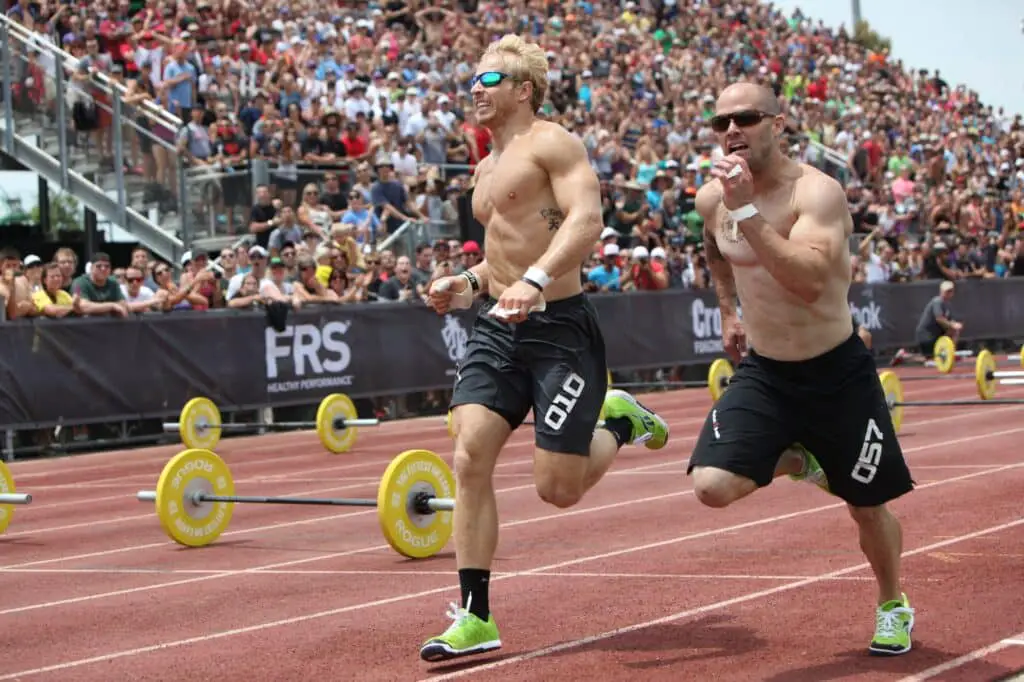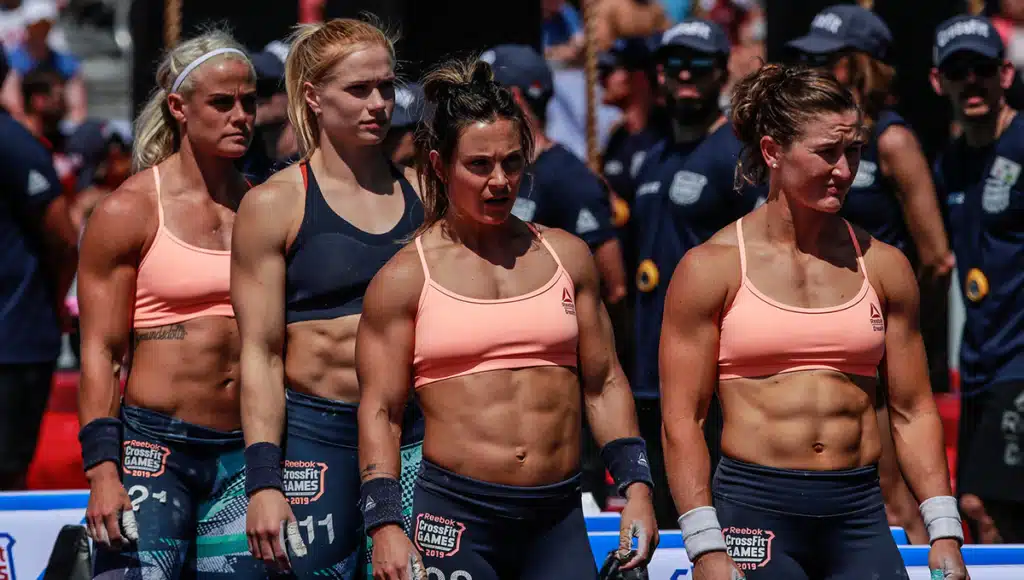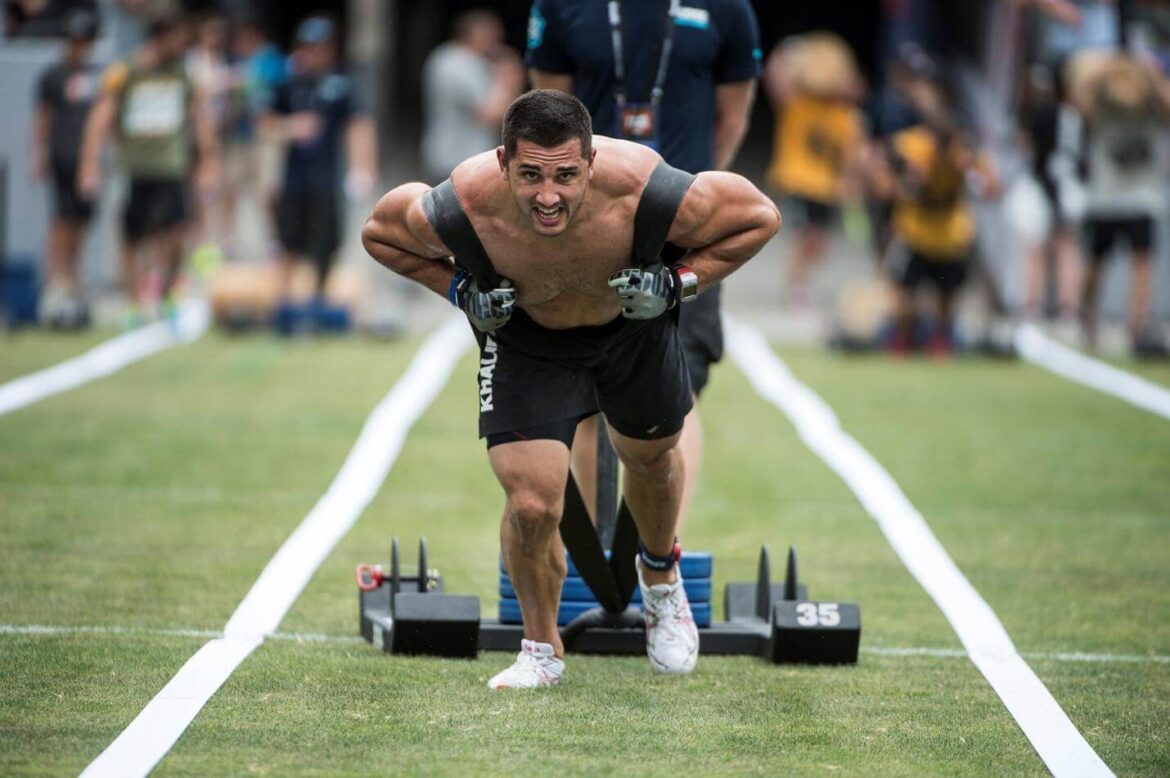Introduction
CrossFit has emerged as a fitness phenomenon, captivating athletes and fitness enthusiasts alike with its grueling workouts and competitive spirit. As this high-intensity sport gains popularity, questions surrounding the use of performance-enhancing substances, particularly steroids, have surfaced. The debate over whether CrossFit athletes take steroids has become a subject of significant interest and controversy within the fitness community and beyond.In this age of relentless pursuit of athletic excellence, the desire for an edge is undeniable. CrossFit demands peak physical performance, pushing athletes to their limits in a relentless pursuit of strength, endurance, and agility.
Such demands can tempt individuals to explore shortcuts, including the use of steroids, which promise rapid muscle growth and enhanced recovery.This exploration aims to delve into the complex issue surrounding steroid use in CrossFit. By examining various perspectives, including the sport’s anti-doping measures, anecdotal evidence, and the broader context of performance-enhancing drugs in sports, we will seek to shed light on the question: Do CrossFit athletes take steroids, and if so, to what extent.
CrossFit has emerged as a fitness phenomenon, captivating athletes and fitness enthusiasts alike with its grueling workouts and competitive spirit. As this high-intensity sport gains popularity, questions surrounding the use of performance-enhancing substances, particularly steroids, have surfaced. The debate over whether CrossFit athletes take steroids has become a subject of significant interest and controversy within the fitness community and beyond.In this age of relentless pursuit of athletic excellence, the desire for an edge is undeniable. CrossFit demands peak physical performance, pushing athletes to their limits in a relentless pursuit of strength, endurance, and agility. Such demands can tempt individuals to explore shortcuts, including the use of steroids, which promise rapid muscle growth and enhanced recovery.

Have any CrossFit athletes tested positive for steroids?
Trent Williams and Angelique Conoway both tested positive for performance-enhancing drugs. Williams, a member of CrossFit 10 Star Hybrids, the third-place finishing team at the African Semifinal received a four-year sanction starting May 21st of this year.
Yes, there have been instances where CrossFit athletes have tested positive for performance-enhancing drugs, including steroids. As you mentioned, Trent Williams, a member of CrossFit 10 Star Hybrids, was among those who tested positive for such substances. He received a four-year sanction starting on May 21st of a specific year. This case, along with others, underscores the importance of anti-doping measures in the CrossFit community to maintain the integrity of the sport and ensure a level playing field for all participants.
CrossFit, like many other competitive sports, has implemented drug testing protocols to discourage and detect the use of performance-enhancing substances. When athletes are found to have violated these anti-doping rules, they face sanctions and penalties as a consequence. These cases serve as a reminder that the sport is committed to upholding fair competition and the principles of clean, drug-free athleticism.
How are CrossFit athletes so big?
Most of us in crossfit are committed to eating muscle building foods as well. We increase our protein intake, lift heavy, train with cardio, and condition our bodies to perform optimally in daily activities. Every day we are working almost every muscle group in our bodies, under a controlled program.CrossFit athletes often have well-defined and muscular physiques due to a combination of factors that are integral to their training regimen.
Strength Training: CrossFit places a strong emphasis on strength training, which involves lifting heavy weights and performing compound movements such as squats, deadlifts, and bench presses. These exercises stimulate muscle growth and development, leading to increased muscle mass.
High-Intensity Workouts: CrossFit workouts are intense and diverse, involving a variety of functional movements. This intensity not only burns calories but also promotes muscle growth and endurance.
Nutrition: As you mentioned, CrossFit athletes are typically committed to a balanced and protein-rich diet. Protein is crucial for muscle repair and growth. They also pay attention to their overall macronutrient intake to support their energy needs and recovery.
Metabolic Conditioning: CrossFit incorporates metabolic conditioning workouts, often referred to as “MetCons,” which combine strength and cardiovascular elements. These workouts can help reduce body fat while preserving and building muscle.
Consistency: CrossFit athletes train regularly, often multiple times a week, which allows them to continuously stress and stimulate their muscles, leading to growth and adaptation over time.
What age do CrossFit athletes peak?
The sport is too young to tell which age since it is still relatively new. In normal athletics, depending on their career, most people peak around 20–30 years old.
CrossFit, being a relatively new sport and fitness phenomenon, doesn’t have well-defined age peaks like some traditional sports. Athletes in CrossFit come from various backgrounds and age groups, which makes it challenging to pinpoint a specific age at which they peak. However, there are some general considerations.
Varied Ages: CrossFit athletes range in age from teenagers to those in their 40s, 50s, and even beyond. The sport’s inclusive nature allows individuals of different ages and fitness levels to participate.
Youth Athletes: Younger athletes may have an advantage in terms of recovery and adaptability, allowing them to progress rapidly in their late teens and early twenties.
Experience Matters: Athletes who have been involved in CrossFit for several years may continue to improve and refine their skills even as they get older. Experience and technique can compensate for age-related physical changes.
Masters Division: CrossFit has introduced a “Masters” category for athletes over the age of 35, with various age brackets within this category. This recognizes that athletes can still perform at a high level as they age.
Individual Variation: Like any sport, individual genetics, training history, and lifestyle factors all influence an athlete’s peak performance age. Some individuals may peak in their late 20s, while others might reach their best performance in their 30s or beyond.
Is it OK to take steroids for gym?
Some people believe taking anabolic steroids will help them become fit and healthy. This isn’t true: taking anabolic steroids is a dangerous drug habit.
No, it is not okay to take anabolic steroids for the purpose of enhancing gym performance or physical appearance. Anabolic steroids are synthetic substances that mimic the effects of the male hormone testosterone. While they can increase muscle mass and strength, they come with serious health risks and potential side effects. Here are some reasons why taking anabolic steroids is not advisable.
Health Risks: Anabolic steroid use can lead to a wide range of health problems, including liver damage, cardiovascular issues (e.g., heart attacks and strokes), hormonal imbalances, and psychiatric effects such as mood swings and aggression.
Addiction and Dependence: Steroid use can become addictive, leading to dependency where individuals feel they cannot perform well in the gym without them.
Legal Consequences: In many countries, the possession and distribution of anabolic steroids without a prescription is illegal. Using or distributing steroids illegally can result in criminal charges and legal consequences.
Ethical Concerns: Using steroids to gain an unfair advantage in sports or bodybuilding competitions is considered unethical and goes against the principles of fair play.
Short-Term Gains, Long-Term Losses: While steroids can provide short-term muscle growth, they do not promote long-term health and fitness. In fact, they can harm overall well-being and lead to long-term health problems.
ways to achieve their fitness goals:
Proper Nutrition: A balanced diet that includes adequate protein, carbohydrates, and fats can support muscle growth and overall health.
Regular Exercise: Consistent, structured training programs can help individuals make progress in the gym over time.
Rest and Recovery: Adequate rest and recovery are essential for muscle repair and growth.
Supplements: If needed, consider using safe and legal supplements, but always consult with a healthcare professional before doing so.
Consult a Professional: Seek guidance from fitness trainers, nutritionists, or healthcare professionals to develop a safe and effective fitness plan.
Can CrossFit athletes run?
Running in CrossFit is rarely more than a mile and most often 400m at a time. A smarter protocol would be holding a hard pace for 200-400m, taking very short rest and repeating it in many intervals.CrossFit athletes can certainly run, and running is incorporated into CrossFit workouts as part of the overall fitness regimen. While it’s true that CrossFit workouts typically involve shorter distances of running, such as 200m or 400m sprints, rather than long-distance running, this serves a specific purpose within the CrossFit training methodology.
Running in CrossFit is often used for several reasons:
Cardiovascular Conditioning: Running, even in shorter distances, is an effective way to improve cardiovascular fitness and endurance, which are essential components of overall fitness.
Interval Training: Short sprints with brief rest periods between them are a form of interval training. This type of training can help increase speed, power, and the body’s ability to recover quickly between bursts of effort.
Variation: CrossFit places a strong emphasis on varied workouts to prevent plateaus and improve overall athleticism. Incorporating running adds diversity to the training routine.
Functional Fitness: Running is a functional movement that mimics a real-life activity, and CrossFit emphasizes functional fitness that prepares individuals for various physical challenges.
Time-Efficiency: Short sprints and interval-style running workouts can be completed relatively quickly, making them a practical choice for high-intensity training sessions.
What are the safest steroids to take?
Testosterone available in both oral and injectable forms, testosterone is widely prescribed to treat low testosterone levels and is considered the safest oral steroid.
It’s essential to clarify that the use of any anabolic steroid, even those considered “safer” or legally prescribed, should only be done under the supervision and guidance of a qualified medical professional for legitimate medical purposes. Anabolic steroids carry potential risks and side effects, and their misuse can lead to serious health issues.
Cardiovascular Issues: Elevated levels of testosterone can impact cholesterol levels and increase the risk of cardiovascular problems.
Hormonal Imbalances: Long-term use of exogenous testosterone can lead to a shutdown of the body’s natural testosterone production, potentially causing hormonal imbalances when treatment is discontinued.
Psychological Effects: Testosterone use can affect mood and behavior, leading to mood swings and aggression in some individuals.
Liver Toxicity (Oral Form): While injectable testosterone is generally considered safer, oral forms may stress the liver, especially when taken in high doses or for extended periods.
Prostate Health: Testosterone therapy may increase the risk of prostate issues in older men.
What is the safest steroid to take?
Testosterone (Sustanon/Testosterone Enanthate), Anavar, and Deca Durabolin are the three safest anabolic steroids to use. Out of the three, testosterone is the safest overall, though, as we have pointed out already, using this synthetic steroid human growth hormone alone for bodybuilding will never be 100% safe.It’s important to reiterate that the use of anabolic steroids, including those considered “safer,” should only be undertaken under the guidance and supervision of a qualified medical professional for legitimate medical purposes. Using anabolic steroids for non-medical purposes, such as bodybuilding or athletic performance enhancement, is illegal in many places and poses serious health risks.
Among the steroids you mentioned:
Testosterone (Sustanon/Testosterone Enanthate): Testosterone is indeed one of the safest anabolic steroids when used as prescribed by a medical professional for treating conditions like low testosterone levels (hypogonadism). However, even when used for medical purposes, it can still carry potential risks and side effects, as mentioned earlier.
Anavar (Oxandrolone): Anavar is often considered a milder anabolic steroid with a lower risk of certain side effects compared to some other steroids. It is sometimes prescribed medically to treat conditions like muscle wasting. However, it is not entirely devoid of side effects, and misuse can still lead to health problems.
Deca Durabolin (Nandrolone Decanoate): Deca Durabolin is another anabolic steroid that has been used medically, primarily for conditions involving muscle wasting and anemia. Like other steroids, it has potential side effects and risks.
Why are CrossFit athletes so strong?
From barbell work to muscle-ups and GHD sit-ups, CrossFitters like most strength athletes spend a lot of time working both sides of their body at once. This is excellent for overall strength and power production.CrossFit athletes are known for their impressive strength due to a combination of factors within the CrossFit training methodology
Functional Movements: CrossFit emphasizes functional movements that engage multiple muscle groups and joints simultaneously. These movements mimic real-life activities, such as lifting objects, climbing, and jumping, which contribute to overall functional strength.
Variety: CrossFit workouts are highly diverse, incorporating a wide range of exercises, including barbell lifts, bodyweight movements, kettlebell exercises, and more. This variety challenges different muscle groups, leading to comprehensive strength development.
Intensity: CrossFit workouts often involve high-intensity training, pushing athletes to lift heavy weights and perform exercises with maximum effort. This intensity promotes muscle growth and power production.
Compound Movements: Many CrossFit exercises are compound movements that involve multiple muscle groups, such as squats, deadlifts, and cleans. These exercises build strength and power across the entire body.
Olympic Weightlifting: CrossFit includes Olympic weightlifting movements like snatches and clean and jerks, which require tremendous strength and technique. These lifts are excellent for developing explosive power.

Conclusion
The use of steroids in CrossFit remains a subject of concern and controversy within the fitness community. While it is essential to recognize that not all CrossFit athletes engage in the use of performance-enhancing substances, instances of doping have been reported. The desire for competitive advantage, the pressure to perform at the highest level, and the lure of rapid physical gains can tempt some individuals to explore illicit means.
CrossFit, as a sport, is governed by anti-doping regulations and strives to maintain a level playing field for all competitors. Athletes found guilty of using steroids or other banned substances face consequences, including disqualification and tarnishing their reputation.However, it is crucial to avoid making blanket assumptions about all CrossFit athletes based on the actions of a few. The majority of CrossFit athletes are dedicated to their sport, training diligently, and achieving their goals through hard work, dedication, and adherence to fair play.
The topic of steroid use in CrossFit also underscores the broader issue of performance-enhancing substances in sports. It serves as a reminder of the ongoing challenges that athletes and sports organizing face in maintaining the integrity of competitive sports. Striking a balance between fair play and ensuring that athletes have access to legitimate medical treatments can be a complex task.Athletes and governing bodies must remain vigilant in the fight against doping, continually refining testing procedures and education efforts to deter and detect illicit substance use.

